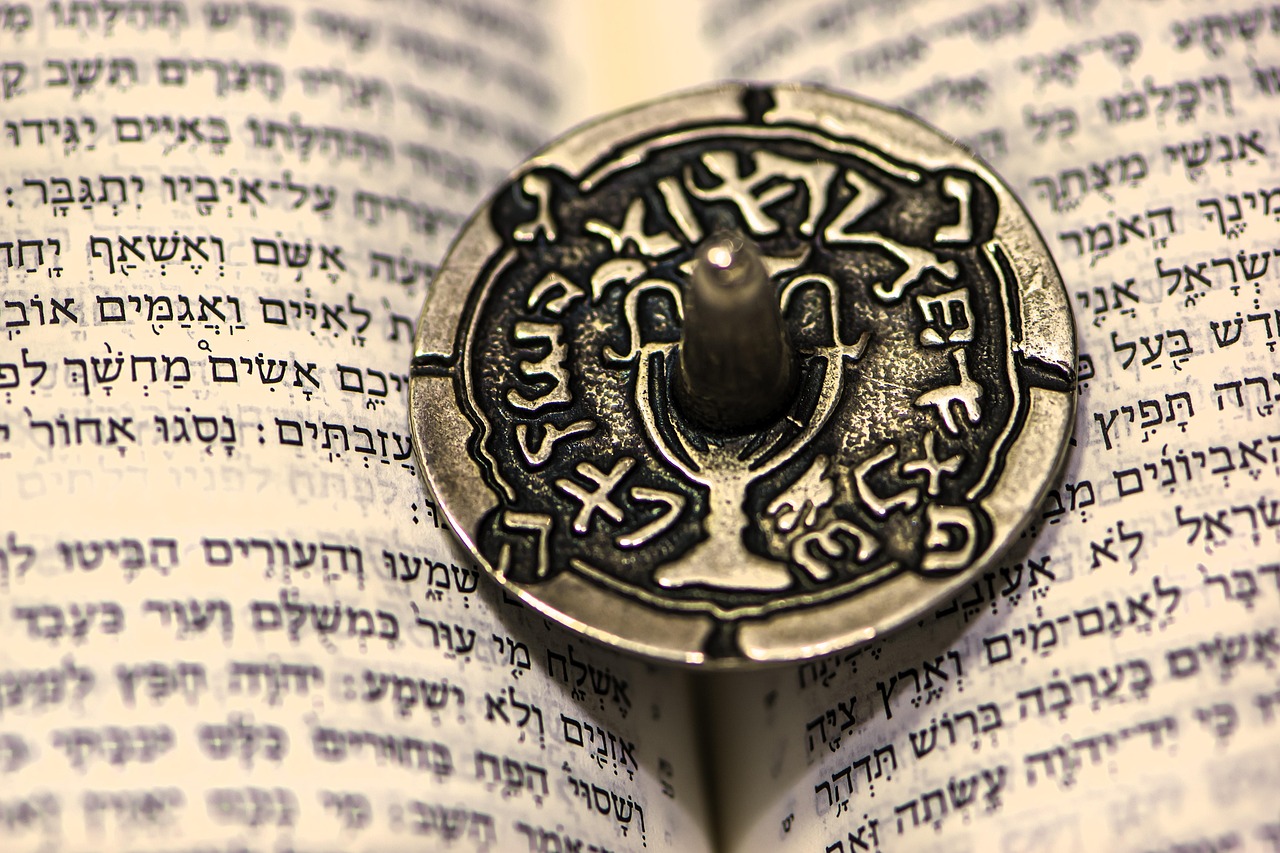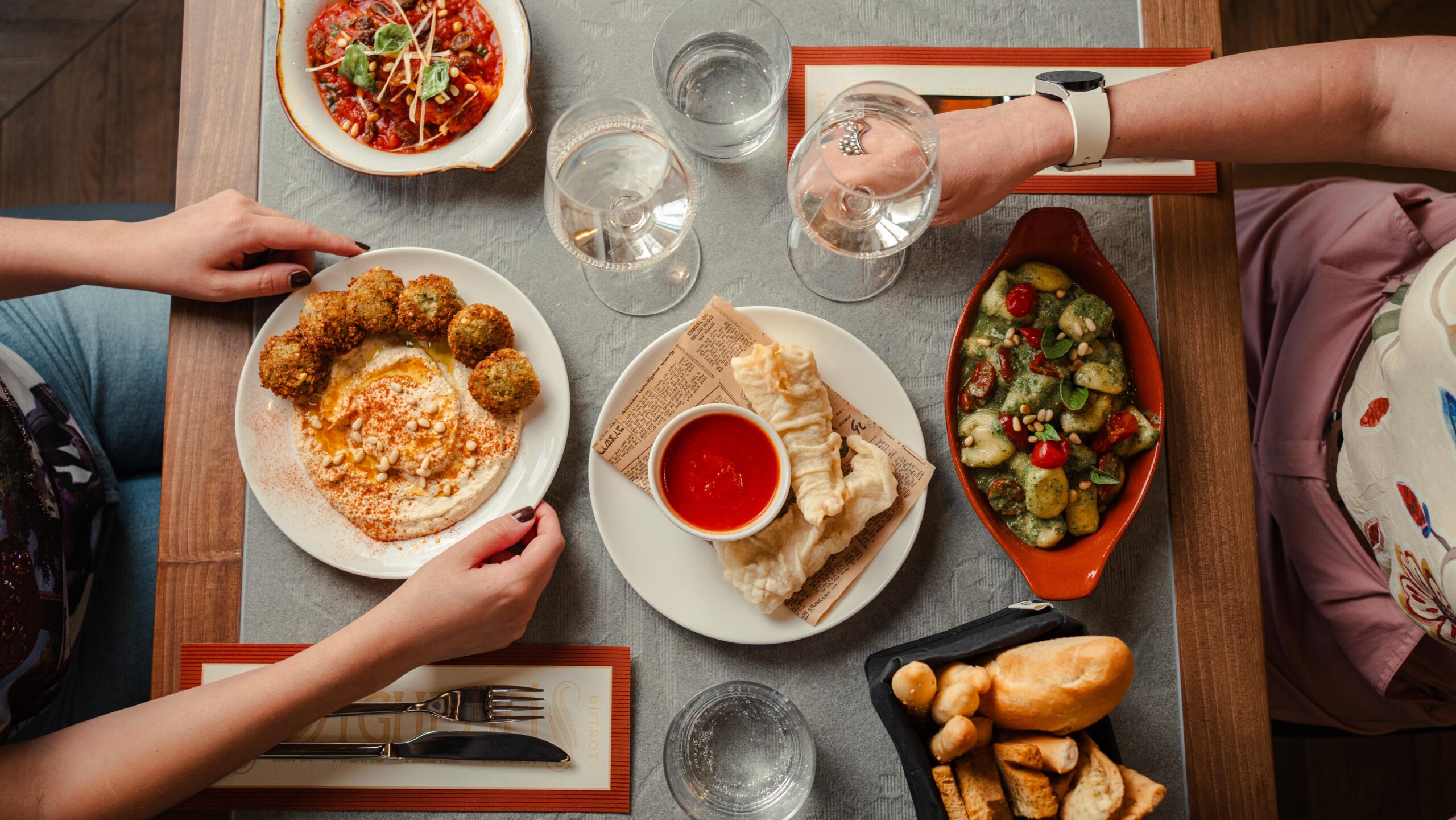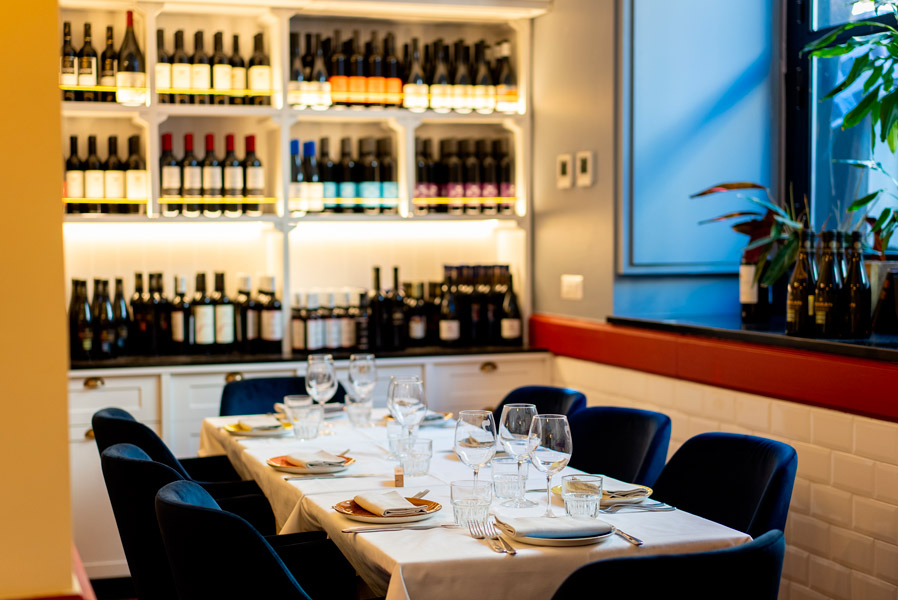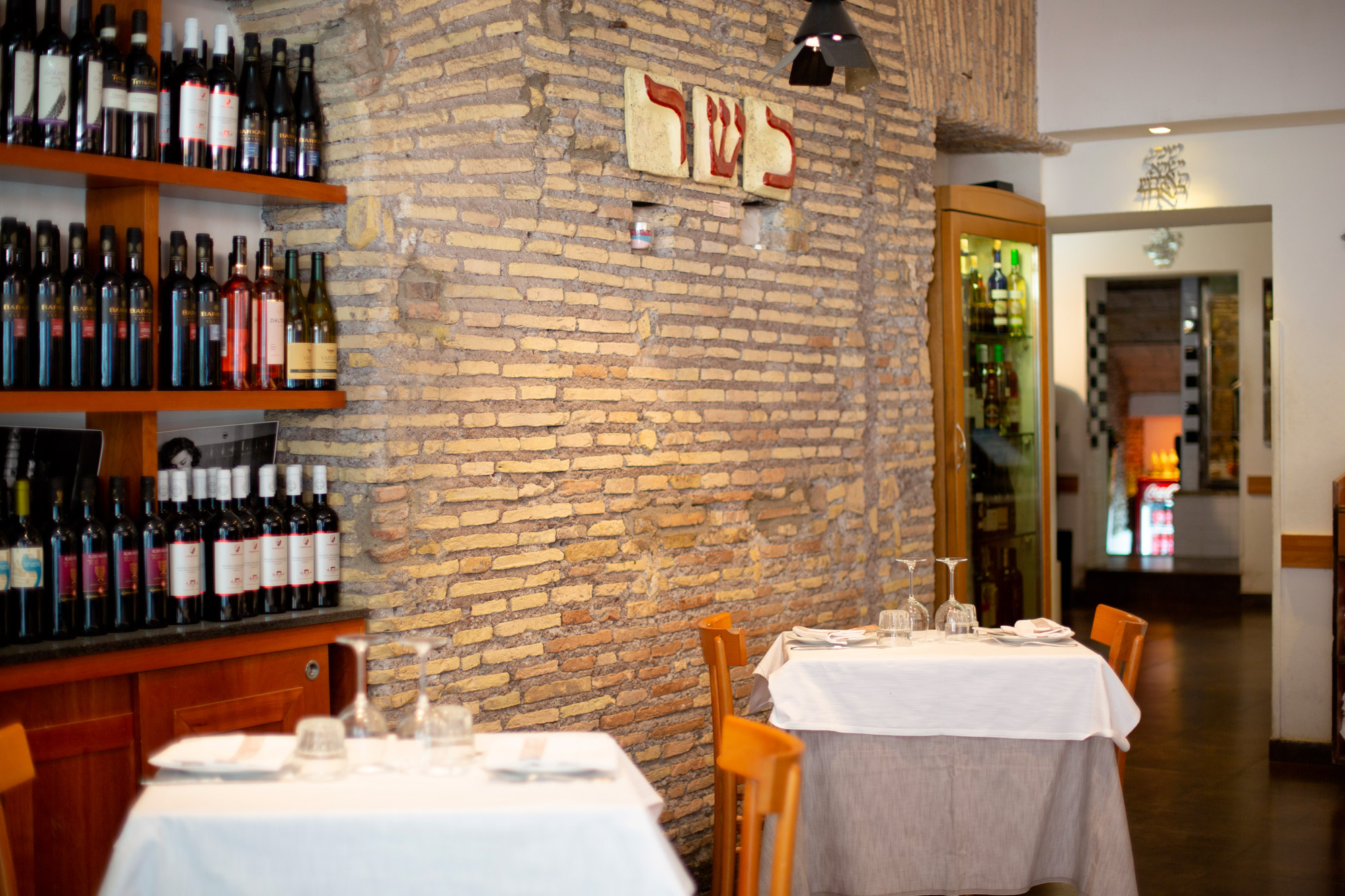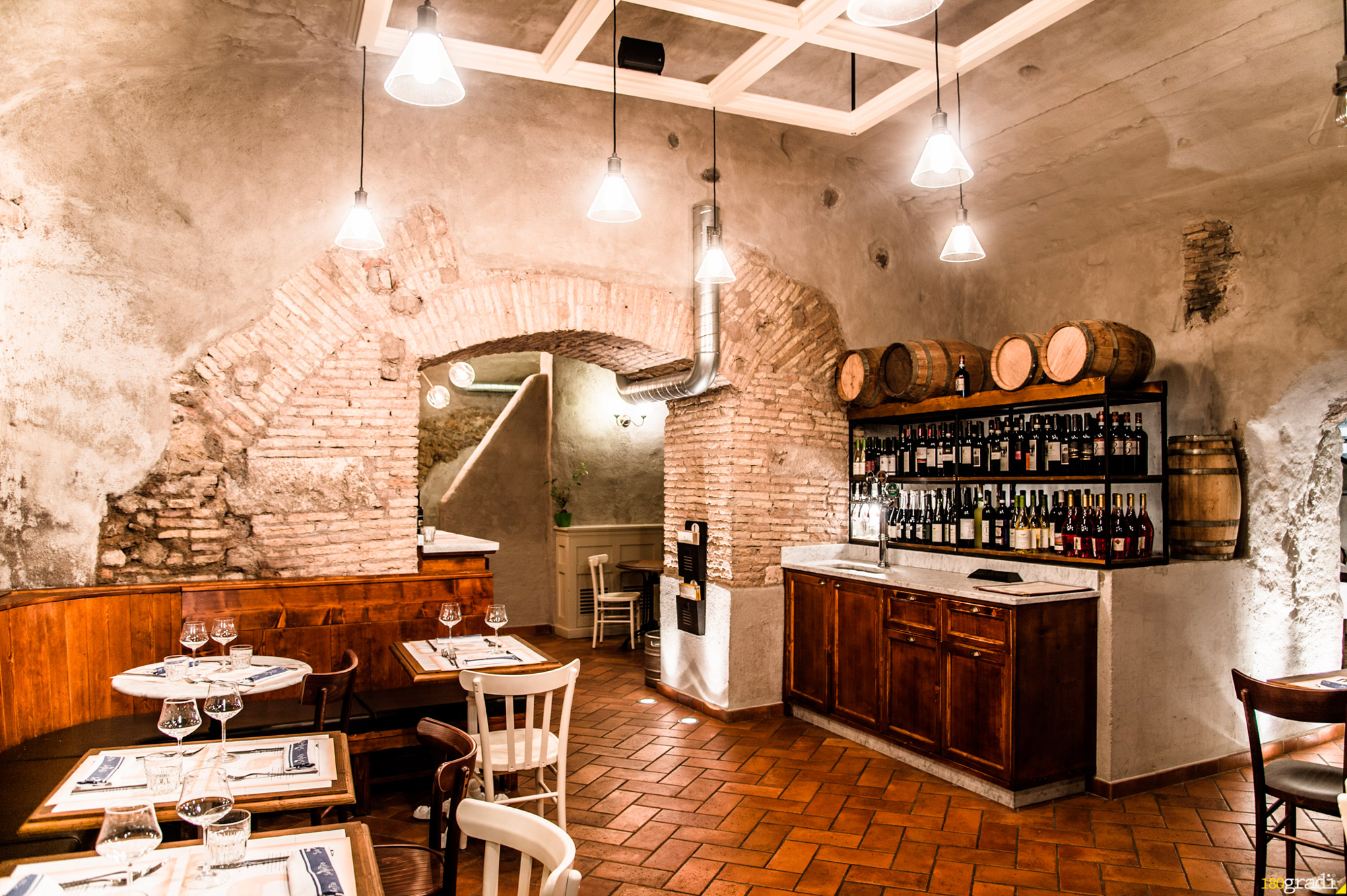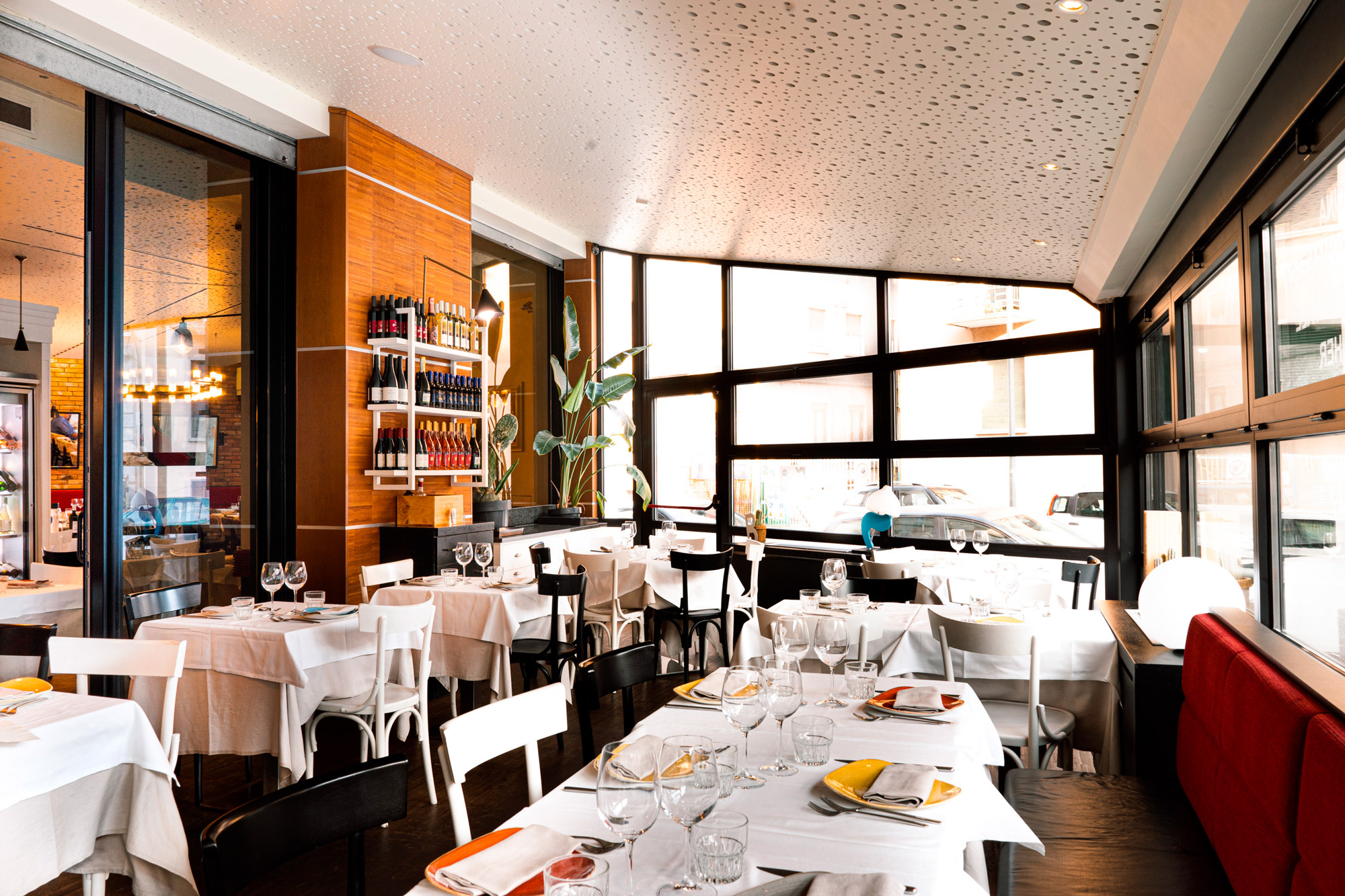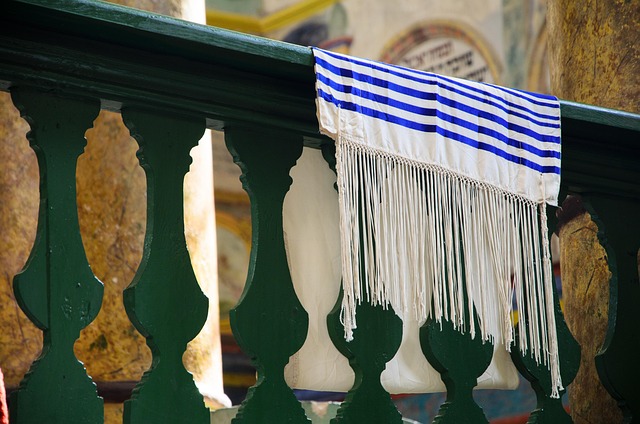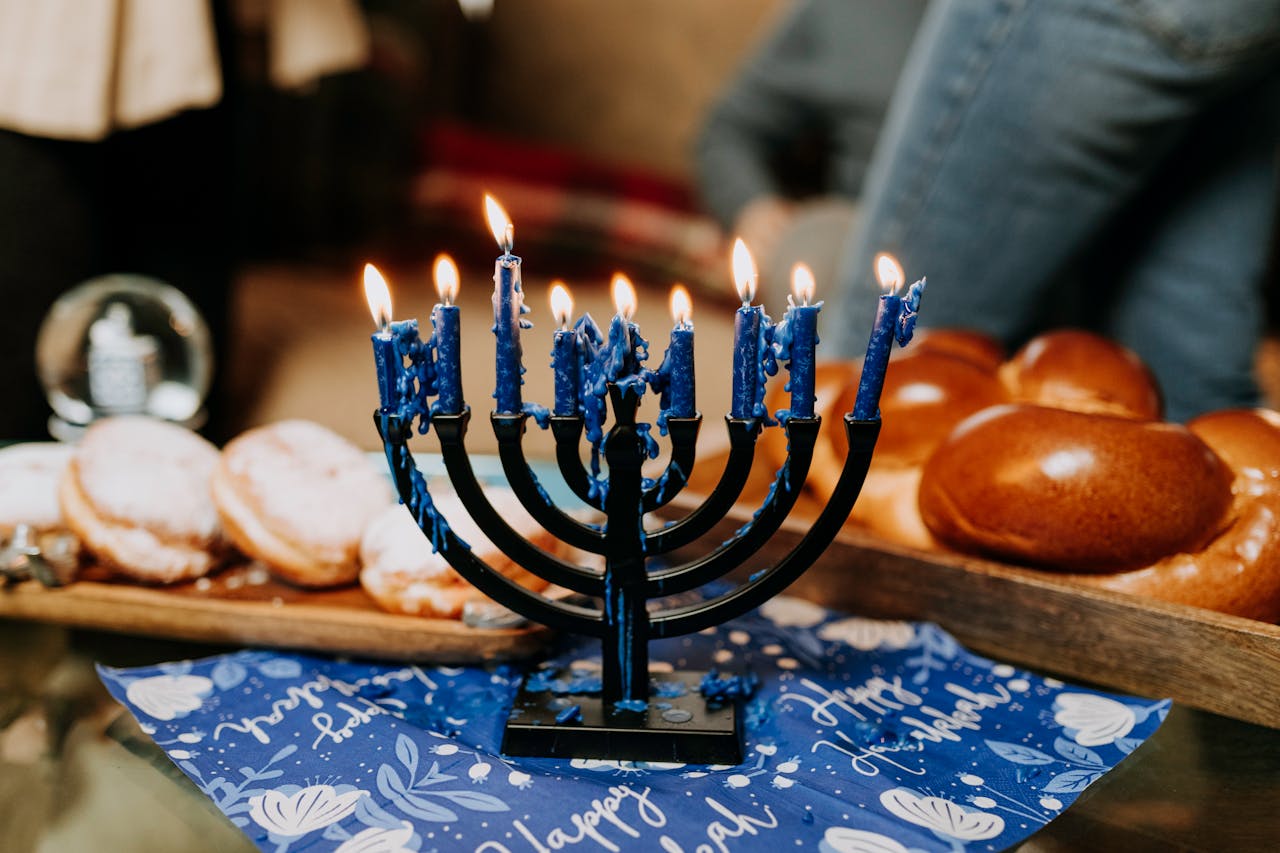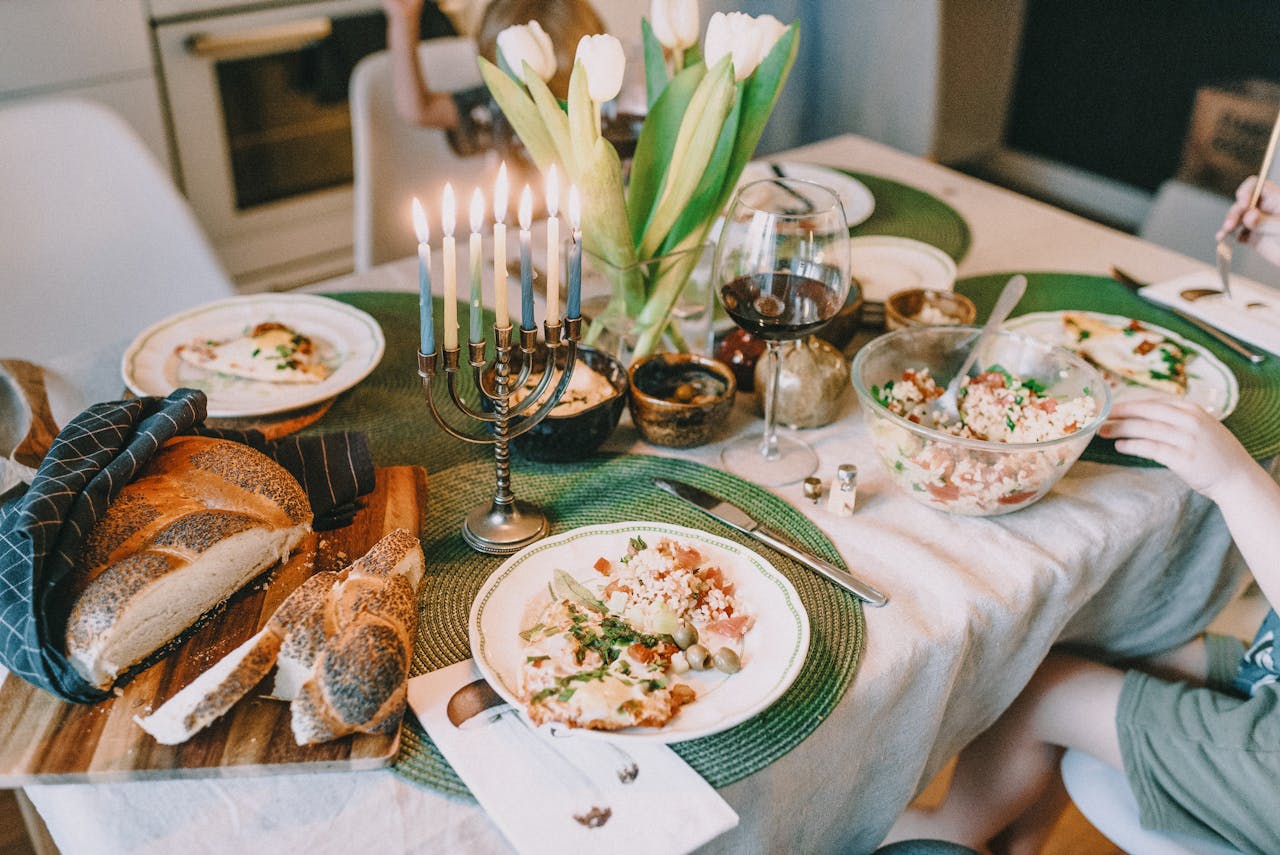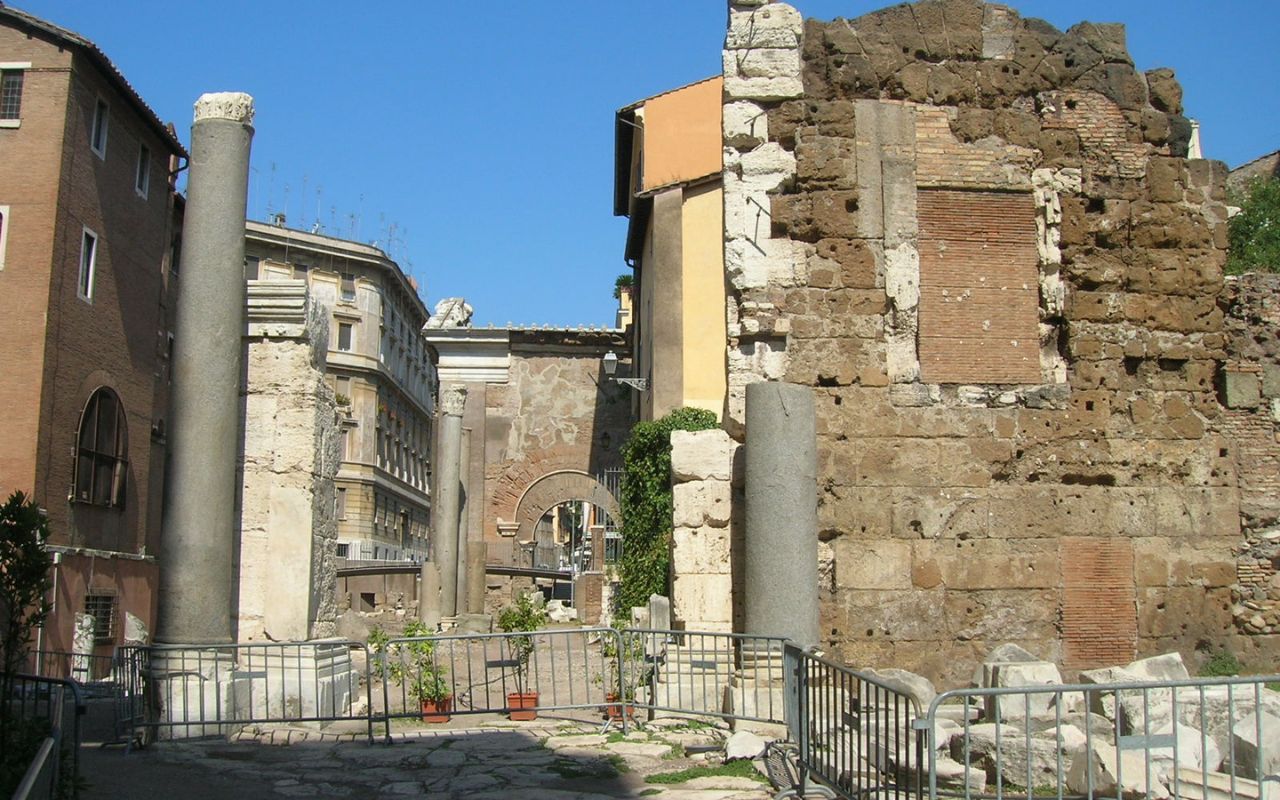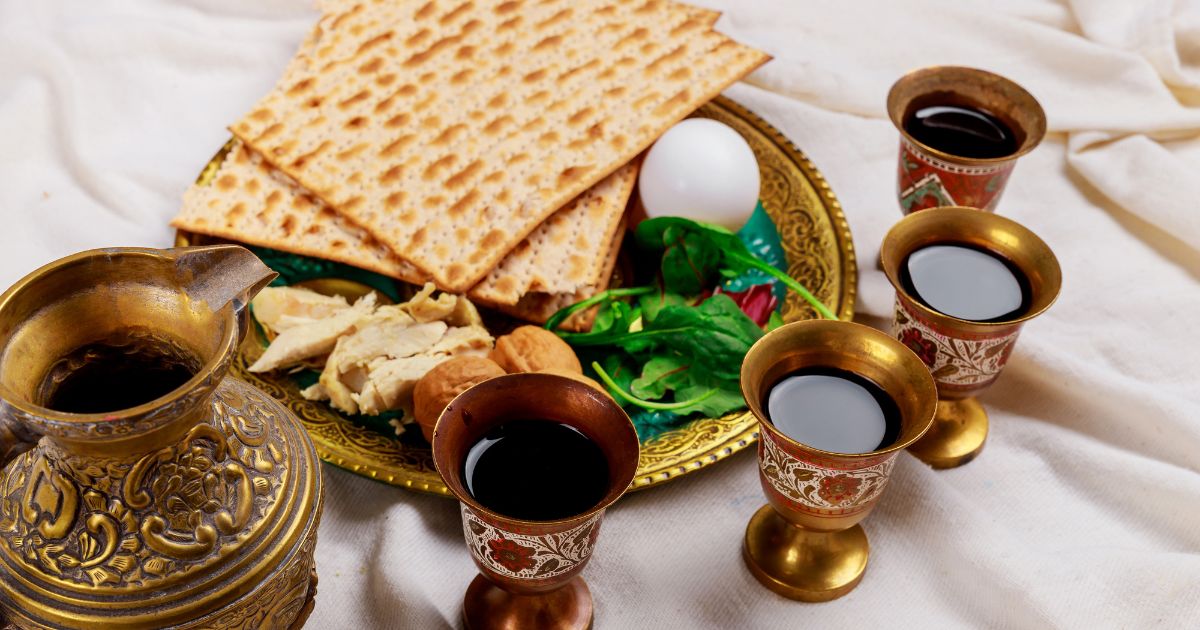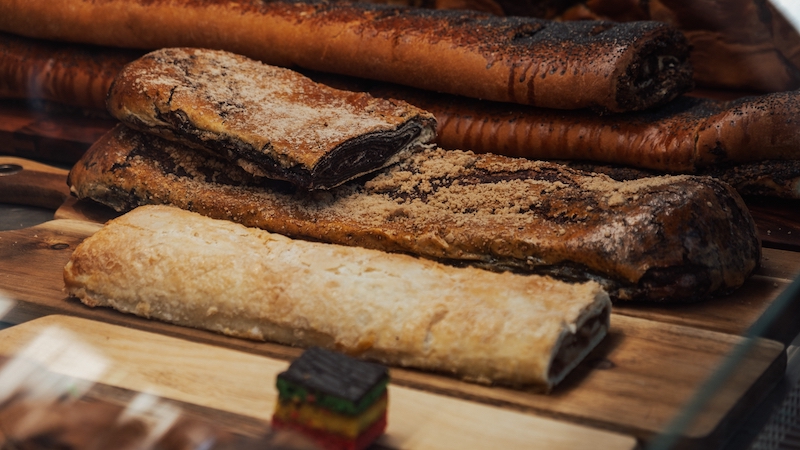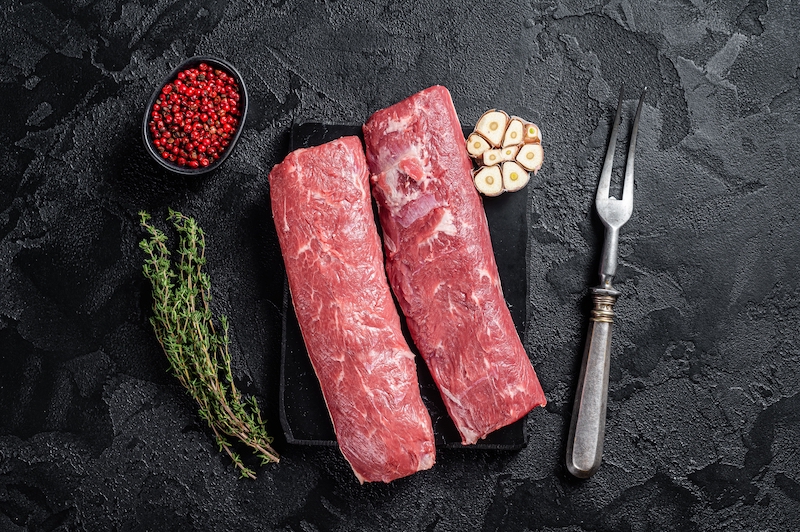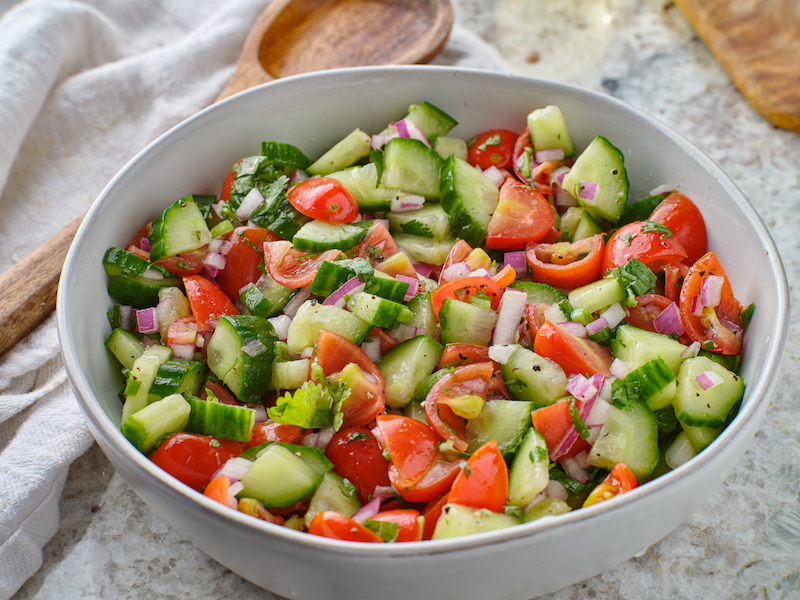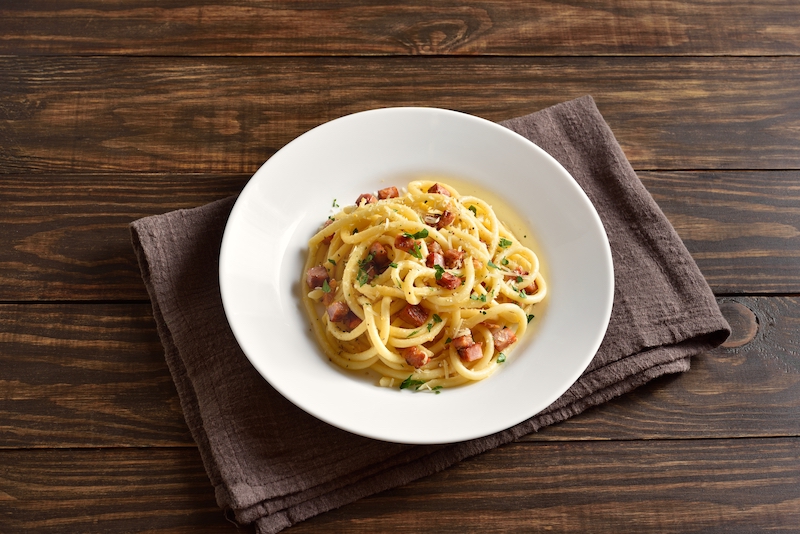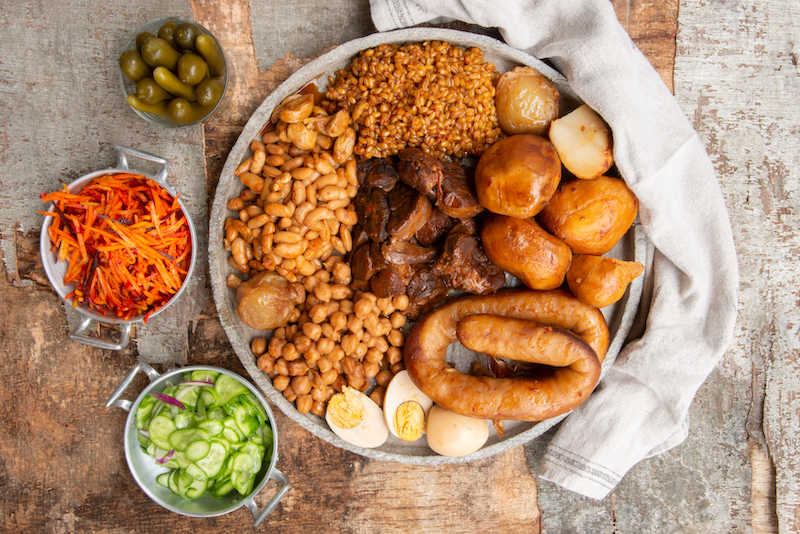Unleavened bread is one of the most symbolic foods of Jewish tradition. Known as matzà in Hebrew, it is a flatbread made without yeast that has accompanied the history, culture, and religion of the Jewish people for millennia. It is not simply food, but a true ritual carrying precise rules, deep meanings, and a preparation that leaves no room for improvisation.
In this article, we will explore what unleavened bread represents, the rules to follow in preparing it according to tradition, and how its symbolism has endured across the centuries.
What is Unleavened Bread
The word unleavened comes from the Greek azymos, meaning “without yeast.” This bread stands apart from all others because it involves no fermentation process. It is made exclusively with water and flour and baked quickly to prevent the dough from rising.
Unleavened bread is not only a lighter alternative to regular bread, but above all, it is a ritual food. In Jewish tradition, it is tied to Passover (Pesach), when it is eaten to commemorate the Exodus from Egypt, when the Israelites, forced to leave in haste, had no time to let their bread rise.
The Meaning of Unleavened Bread in Jewish Culture
Jewish unleavened bread is a symbol of freedom and remembrance. During Pesach, eating matzà means reliving the experience of the ancestors who left Egypt, recalling the hardships but also the strength of liberation.
In Jewish symbolism, unleavened bread also represents humility and purity, as opposed to leavened bread, which grows and swells like pride. For this reason, matzà is not just a ritual food but also a spiritual teaching, inviting reflection on the value of simplicity.
The Rules of Unleavened Bread According to Jewish Tradition
Kosher unleavened bread must follow precise religious rules to ensure its conformity. These rules, set by the halakhah (Jewish law), are strictly observed, especially during Pesach.
The main rules are:
- Limited preparation time: no more than 18 minutes may pass from the mixing of water and flour to baking. This prevents any natural fermentation from starting.
- Absolute cleanliness of utensils: everything used in the preparation must be free from any residue that could cause leavening.
- Very hot oven: baking must take place in a hot oven to stop fermentation and produce thin, crisp bread.
- Rabbinical supervision: in observant communities, the production of matzà is often overseen by a rabbinical authority, which certifies the product’s conformity.
These rules make unleavened bread not just food, but a true means of connecting with tradition and with God.
Ingredients and Variants
The ingredients of unleavened bread are very simple: water and wheat flour. However, there are some recognized variations in different Jewish traditions.
- Plain matzà: the most common, made with just water and flour.
- Enriched matzà: in some contexts, oil or fruit juice may be added, though these variants are not permitted during Pesach.
- Matzà shmurah: made with flour from grain that has been guarded from the time of harvesting to ensure it has not come into contact with moisture. It is considered the most rigorous from a religious standpoint.
Generally, during Passover, the simplest version is always preferred, in remembrance of the Exodus.
How to Make Unleavened Bread at Home
Although ritual production is entrusted to specialized, supervised bakeries, you can try making homemade unleavened bread. Naturally, if the purpose is religious, all traditional rules must be observed. If, instead, you want to prepare it as a household dish, a basic recipe is enough.
Basic Recipe for Unleavened Bread
Ingredients:
- 250 g wheat flour
- 120 ml water
Method:
- Quickly knead flour and water until smooth.
- Divide the dough into small portions and roll them out very thin with a rolling pin.
- Prick the surface with a fork to prevent puffing.
- Bake in a preheated oven at 250 °C (480 °F) for a few minutes, until golden and crisp.
The result will be a thin, crunchy sheet, similar to a cracker, perfect for accompanying savory dishes or to enjoy on its own.
Unleavened Bread and Jewish Cuisine
Unleavened bread is not only a ritual food, but also an integral part of Jewish cuisine. During Pesach, it is eaten daily and often used as a base for other preparations.
Some examples are:
- Matzà brei: broken matzà cooked in a pan with eggs, similar to an omelette.
- Matzà kugel: an oven-baked dish made with crumbled matzà, eggs, and vegetables or cheese.
- Soups with matzà: often added to chicken soup, making it heartier.
This way, a simple food becomes part of a cuisine rich in history and flavor.
Unleavened Bread and Christian Symbolism
Beyond Jewish tradition, unleavened bread also plays a role in Christianity. In Catholic liturgy, for instance, the consecrated hosts used in the Eucharist are made from unleavened bread.
This connection shows how the symbolism of unleavened bread has remained central in multiple religions, taking on different yet equally profound meanings.
Why Unleavened Bread Still Matters Today
In a world where food is often rushed and industrialized, unleavened bread reminds us of the value of simplicity. Just two ingredients, precise rules, and a meaning that goes beyond food.
Many choose it not only for religious reasons but also as a lighter alternative to regular bread, since it contains no yeast and is easier to digest. Moreover, more and more people are rediscovering it as a cultural element, connecting with Jewish tradition and its millennia-old history.
Where to Buy Unleavened Bread
Packaged unleavened bread is easily found in kosher stores, Jewish communities, or supermarkets in the weeks leading up to Pesach. Industrial versions have a long shelf life, making them accessible even to those who don’t live near a Jewish community.
For a more authentic experience, you can turn to specialized bakeries, where preparation follows traditional rules.
Where to Experience Authentic Kosher Cuisine in Rome
Unleavened bread is not only a symbolic food but also an invitation to rediscover the authentic taste of Jewish-Roman cuisine. If you want to enjoy matzà along with other traditional dishes, visit Ba’Ghetto, in the heart of Rome’s Jewish Ghetto. Book your table now and let yourself be guided on a journey of history, culture, and unique flavors.


